In the world of knitting, where creativity and precision intertwine, the term “frogging” emerges as a unique and somewhat quirky practice.
It represents the art of unraveling, a process undertaken by knitters when errors mar their carefully crafted projects.
The whimsical name, derived from the playful “rip it, rip it” sound, belies the serious intent behind the act.
Frogging is more than just a simple undoing of stitches; it embodies the knitter’s dedication to perfection.
This process allows crafters to rectify mistakes, reshape designs, or start anew with unwavering determination.
To unravel is not to concede defeat, but to embrace the endless possibilities that lie within each strand, ensuring that the final creation is a true masterpiece of patience and skill.
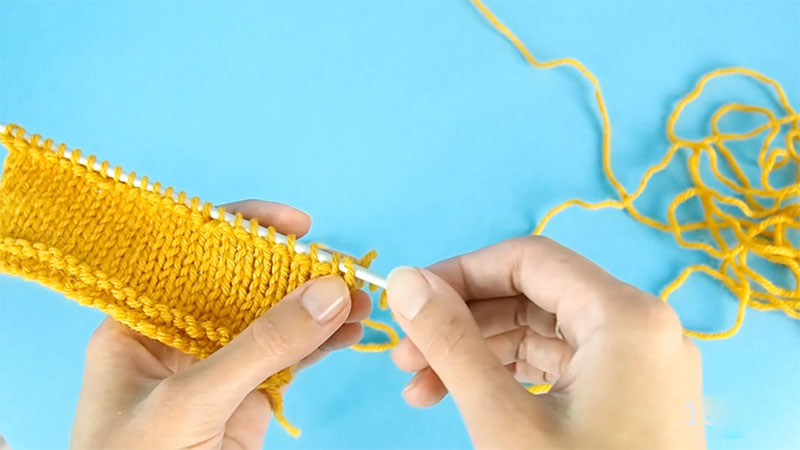
What Is Frogging in Knitting? -The Definition
Frogging in knitting is a term used to describe the act of unraveling or ripping out your knitting work, usually because of a mistake or a need to make changes to the project.
The term “frogging” comes from the sound “rip it, rip it,” which is what many knitters say as they unravel their stitches.
This technique is an essential part of knitting because mistakes are common, and frogging allows you to correct them and ensure your project turns out as intended.
Whether it’s a dropped stitch, a miscounted pattern repeat, or simply a change in design direction, frogging gives knitters the freedom to start over without having to discard their entire work.
Although frogging can be frustrating, it’s a valuable skill that allows knitters to maintain control over their projects and achieve the desired outcome.
It’s a reminder that in the world of knitting, mistakes can be opportunities for growth and improvement.
Why Is It Called Frogging in Knitting?
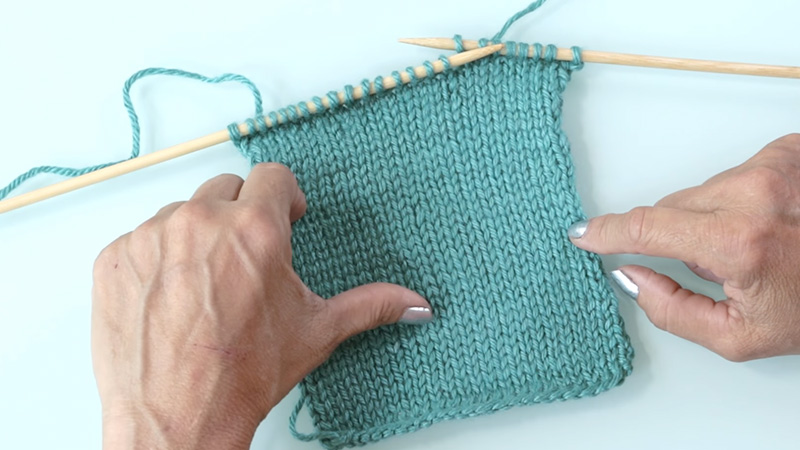
“Frogging” is a colloquial term used in knitting, crochet, and other fiber crafts to describe the process of unraveling or ripping out stitches in a project.
There are a few theories about why this term came to be used in the knitting community:
Rip it, Rip it
One of the most widely accepted explanations for the term “frogging” is that it sounds similar to the sound a frog makes: “ribbit, ribbit.”
When a knitter realizes they’ve made a mistake in their project and needs to undo several rows or even the entire piece, they often say “rip it, rip it” to themselves, which sounds like “ribbit, ribbit.” Over time, this may have morphed into “frogging.”
Unraveling like a Frog’s Long Tongue
Another theory is that the act of unraveling stitches in knitting is similar to a frog extending its long, sticky tongue to catch insects.
In a way, when you “frog” a project, you are undoing your work much like a frog retracts its tongue.
Backward Knitting
In knitting, when you realize you’ve made a mistake a few rows back, you often have to work backward, essentially “un-knitting” your stitches row by row.
Some knitters humorously refer to this process as “knitting backward,” which might have eventually become “frogging.”
How to Do Frogging in Knitting
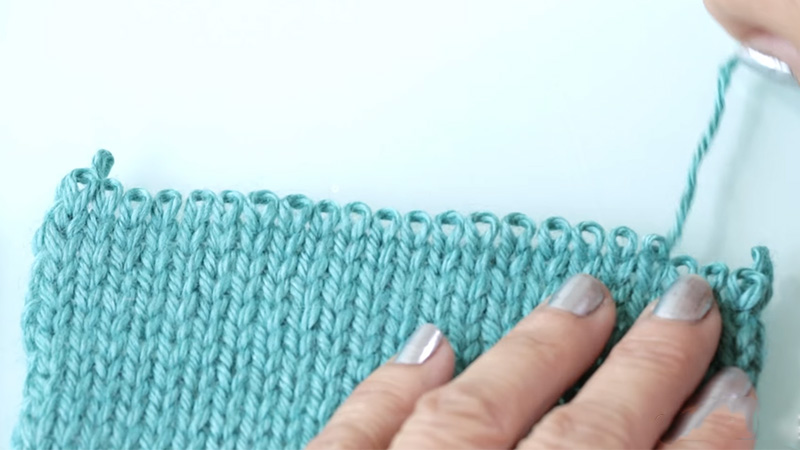
Frogging in knitting is a term used to describe the process of unraveling or undoing your knitting work, typically to correct a mistake or make changes to your project.
The name “frogging” comes from the sound “rip it, rip it,” which is what many knitters say when they realize they need to undo their stitches.
While frogging can be a bit disheartening, it’s an essential skill for any knitter to learn, as it allows you to fix errors and create a finished project that you’re happy with.
Here’s a step-by-step guide on how to do frogging in knitting:
Materials you’ll need:
- Your knitting project
- Knitting needles
- A yarn needle
- Patience and a calm mindset
Steps for Frogging:
Identify the Mistake
Before you start frogging, carefully examine your knitting to identify where the mistake occurred. It’s essential to be sure about the exact location of the error, as you’ll want to unravel only the rows or stitches affected by the mistake, leaving the rest of your work intact.
Secure Your Work
To avoid accidentally unraveling more than you intend, insert a knitting needle through the stitches in the row just below the mistake. This will serve as a lifeline, preventing your stitches from unraveling further.
Begin Unraveling
Starting from the top of your project (the most recent rows), gently pull on the yarn to undo the stitches.
Be cautious and go slowly, especially if you’re using a sticky or textured yarn, as it can be more prone to tangling.
Retrace Your Steps
As you unravel, pay close attention to the orientation of the stitches. You want to make sure you don’t twist them or accidentally skip any. If you encounter a stitch marker, remove it and continue unraveling.
Recover Dropped Stitches
If you accidentally drop a stitch while frogging, don’t panic. Use your knitting needle or a crochet hook to pick up the dropped stitch and place it back on the needle in its correct orientation.
Fix the Mistake
Once you’ve undone the rows or stitches containing the mistake, you can re-knit them correctly. Use your knitting pattern or your memory to recreate the pattern or stitch sequence correctly.
Rejoin the Yarn
If you’ve unraveled a significant portion of your project, you may need to rejoin your yarn. To do this, leave a tail of yarn and use a yarn needle to weave it into your work, securing it in place.
Continue Knitting
With the mistake corrected and the yarn reattached (if necessary), continue knitting from where you left off. Ensure that your stitch count is correct, and that your tension matches the rest of your project.
Remove the Lifeline
Once you’re confident that your knitting is error-free and you’re back on track, you can remove the lifeline you inserted earlier.
Tips for Minimizing the Need for Frogging
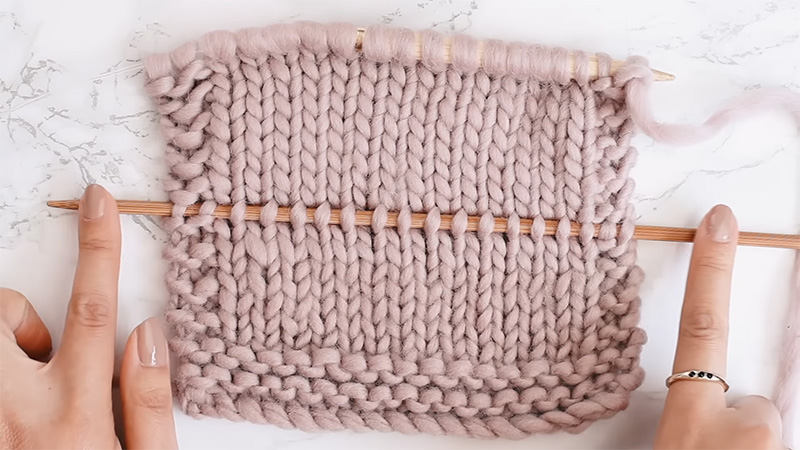
Frogging, in the context of knitting or crocheting, refers to the process of undoing your work, typically because of a mistake or a change in the pattern. It can be frustrating and time-consuming.
So, here are some tips to help minimize the need for frogging:
Read the Pattern Carefully
Before you start, thoroughly read the pattern to understand the instructions. Pay attention to any special stitches or techniques that may be required.
Gauge Swatch
Always make a gauge swatch to ensure your tension matches the pattern’s requirements. This can prevent issues with sizing and fit later on.
Use Stitch Markers
Place stitch markers at key points in your work, such as the beginning of a round or where the pattern repeats start. This can help you easily spot mistakes before they become major.
Check Frequently
Periodically stop and examine your work to ensure it’s correct. Catching errors early can save you from having to frog a lot of stitches later.
Count Your Stitches
Count your stitches and rows regularly to make sure they match the pattern’s instructions. This is especially important in complex patterns.
Use Lifelines
In more intricate or challenging projects, consider using lifelines. A lifeline is a thread or piece of yarn woven through your work at a particular point (e.g., the end of a repeat section).
If you make a mistake, you can easily rip back to the lifeline without unraveling your entire project.
Fix Mistakes Right Away
If you notice a mistake, don’t hesitate to fix it immediately. You can use techniques like tinking (un-knitting) or using a crochet hook to fix dropped stitches.
Keep Good Notes
Write down your progress, especially if you’re making modifications or adjustments to the pattern. This can help you remember what you did if you need to redo a section.
Use Stitch Holders
If you’re working on multiple sections (e.g., sleeves of a sweater), use stitch holders to keep those sections separate. It reduces the risk of accidentally incorporating one section into another.
Take Breaks
Fatigue can lead to mistakes. Take regular breaks to rest your hands and eyes, which can help you maintain focus and accuracy.
Practice Patience
Frogging is part of the crafting process. Accept that mistakes happen, and don’t get discouraged. Learning from your mistakes is part of becoming a skilled knitter or crocheter.
Seek Help
If you’re stuck or unsure about something in the pattern, don’t hesitate to seek advice from experienced crafters or online communities. They can often provide guidance or solutions to common problems.
Frogging vs. Tinking -Know the Difference
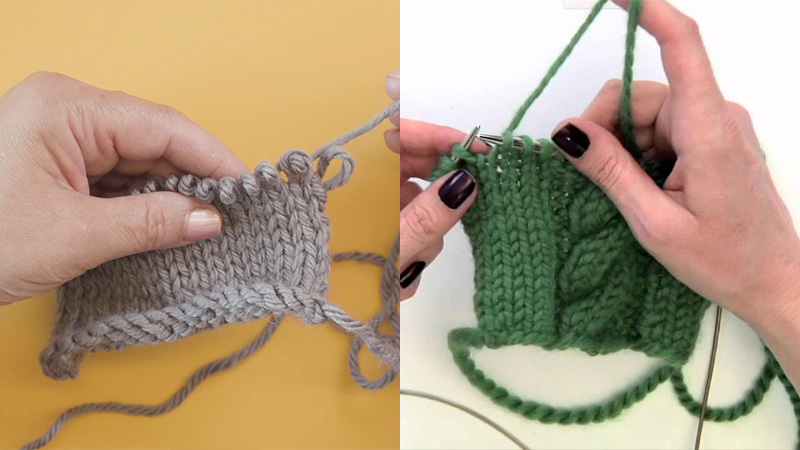
In the world of knitting and crocheting, there are two essential techniques that every fiber artist should be familiar with frogging and tinking.
While these terms might sound whimsical, they play a crucial role in the crafting process, helping you correct mistakes and improve your projects.
So, let’s dive into the world of frogging and tinking and explore the key differences between these two techniques.
Table: Frogging vs. Tinking
| Technique | Description | When to Use | Pros | Cons | Tools Needed |
| Frogging | “Rip it, rip it!” | When a major mistake is made, such as incorrect stitch count, pattern error, or yarn overs. | Allows for quick unraveling of rows or rounds. Can fix complex errors effectively. | Risk of damaging yarn, time-consuming, may result in lost progress. | None (requires fingers or a knitting needle or crochet hook to pick up stitches for repairs). |
| Tinking | “Unknit” or “Backward Knit” | For small mistakes, like a single incorrect stitch or a misplaced decrease. | Precise and controlled unraveling of specific stitches. Less risk of yarn damage. | Slower than frogging for large errors. Limited to fixing individual stitches. | A knitting needle or crochet hook (size appropriate to your project’s yarn weight). |
| Comparison | Frogging | Tinking |
| Speed | Faster for unraveling multiple rows/rounds | Slower, as it involves undoing one stitch at a time. |
| Control | Less precise, entire sections are undone | Highly precise, allows correction of individual stitches. |
| Yarn Damage | Less frustrating, and more forgiving for minor errors. | Higher risk, as the yarn is pulled and stretched |
| Skill Level | Beginner-friendly, suitable for complex errors | Requires more skill, ideal for minor mistakes. |
| Reusability | Yarn may be usable after frogging with care | Yarn is usually reusable without damage. |
| Stress Level | Can be frustrating, especially for significant mistakes | Less frustrating, more forgiving for minor errors. |
FAQS
What Does Frogging Mean in Knitting?
In knitting, “frogging” is a colloquial term used to describe the act of undoing or ripping out your knitting stitches or rows.
Is frogging the same as ripping out my knitting?
Yes, frogging and ripping out your knitting are essentially the same thing.
Why is it called “frogging”?
The term “frogging” in knitting comes from the sound “rip it, rip it,” which is what many knitters jokingly say when they realize they need to unravel their stitches.
Can I frog just a portion of my knitting without undoing the entire project?
Yes, you can frog only a portion of your knitting by carefully unraveling it to the specific point where the mistake occurred.
What should I do if I run out of yarn while frogging?
If you run out of yarn while frogging, you can attach a new ball of yarn by leaving a tail and weaving it in later.
Are there any alternatives to frogging if I make a mistake in my knitting?
Yes, you can consider “thinking” (un-knitting) to correct mistakes, especially if they are minor.
To Recap
In knitting, the term “frogging” has become a familiar and somewhat whimsical concept. It embodies the knitter’s resilience and commitment to perfection in their craft.
Whether it’s unraveling rows to fix a glaring error or reworking a section for a seamless finish, frogging is an invaluable skill.
It signifies not defeat but a determination to create something truly remarkable. Like a frog leaping forward, knitters embark on this journey, rip it by rip it, to achieve the desired outcome.
Understanding when and how to frog is a hallmark of knitting expertise, demonstrating the ability to navigate and correct the intricate threads of creativity with precision and grace.
Leave a Reply